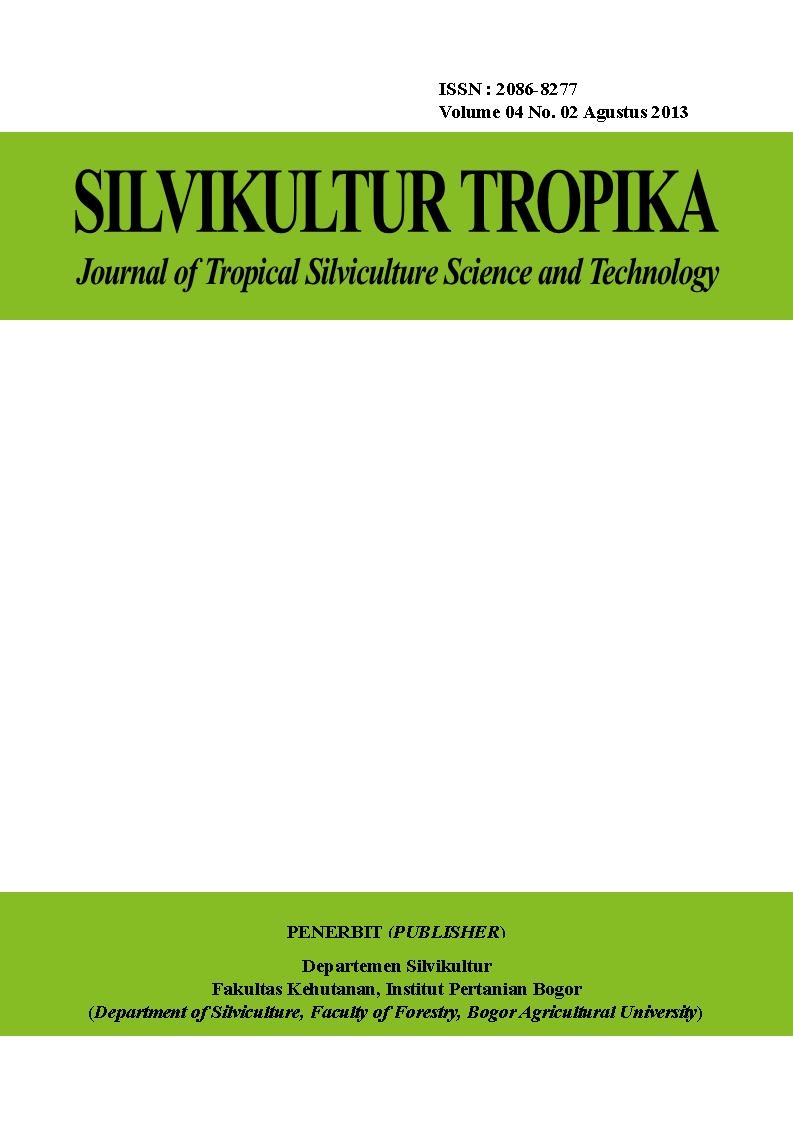Carbondioxide (CO2) Emissions Estimation caused by Forest Fire on Different Land Cover in West Kalimantan Province in 2000-2009
Abstract
Forest fire is one of forest disturbance that may reduce forest area in Indonesia. West Kalimantan is one of Indonesian provinces that are vulnerable to forest fire. It is caused by land use changes that occurred in West Kalimantan Province. Forest fire has a huge impact, it has related with carbondioxide (CO2) emissions are produced.This research was conducted between April and June 2012 at Forest Fires Laboratory, Departement of Silviculture, Faculty of Forestry, Bogor Agricultural University. The data used is hotspot data from Fire Information Resources Management System (FIRMS), precipitation data from Center for Meteorology Climatology and Geophysic (BMKG), and land cover map of West Kalimantan from Roundtable on Sustainable Palm Oil (RSPO). Hotspot data were processed to estimate burned area in each land covers, thus carbondioxide emissions could be obtained. The purpose of this research is to analyze forest and land fire occurrences on different land covers in West Kalimantan in 2000-2009 and to estimate their carbon dioxide emissions.The results showed that primary swamp forest in West Kalimantan decreased until 21% in 2009 while palm oil plantation has increased to 182%. The highest hotspot in the period 2000-2009 occurred in 2006 with 10,699 hotspot. The highest hotspot in 2000, 2005, and 2009 where occurred in shrubland as 225, 1069, and 2205 respectively. The increased of the numbers of hotspot is in line with burned area and CO2 emissions. The largest burned area occurred in shrubland in 2009 (182,718 ha). The highest CO2 emission on mineral land is found in shrubland in 2009 (1,480,023 tons) while primary swamp forest is the highest CO2 emissions producer on peat land in 2009 (91,163 tons). Changes in primary swamp forest into oil palm plantation released the highest CO2 emissions in the amount of 249,209 tons.
Key words: carbondioxide emissions, hotspot, land cover










